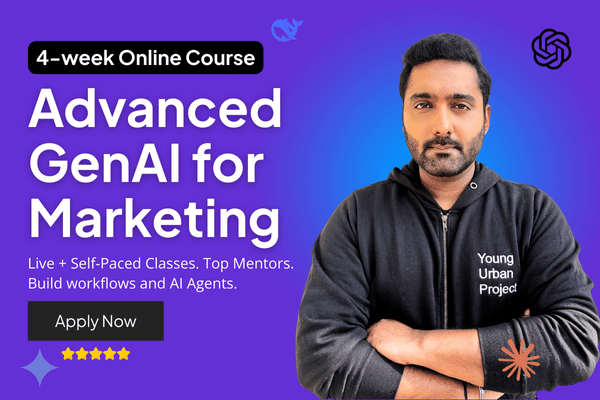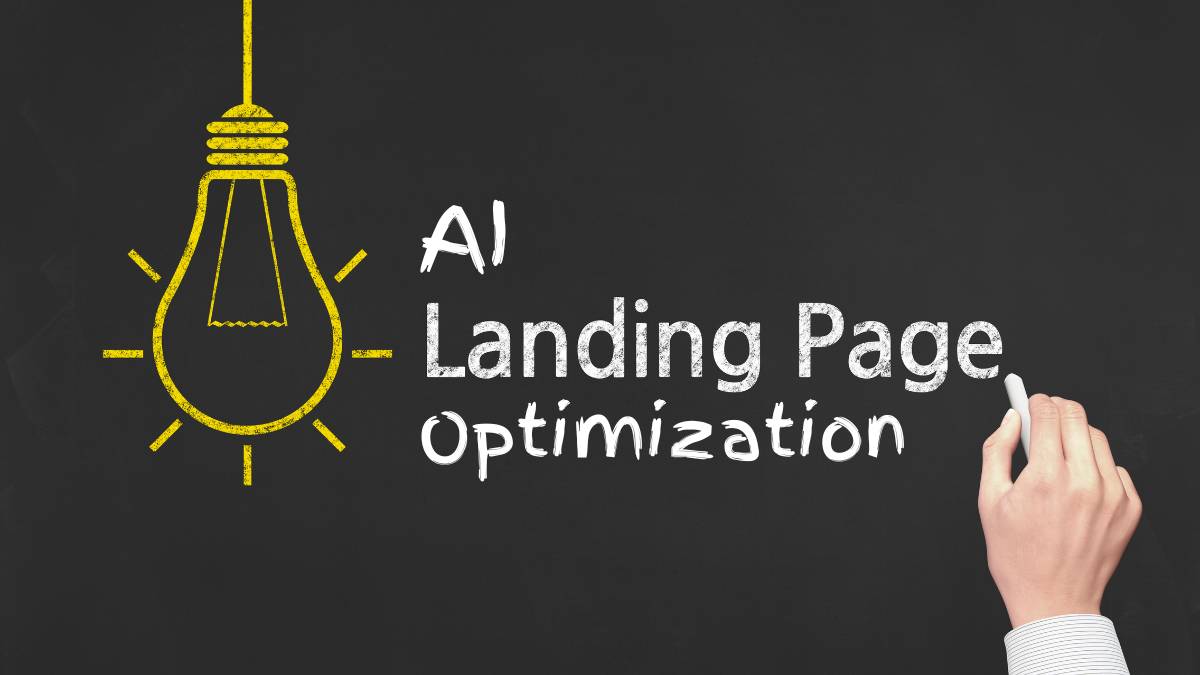Table of Contents
Overview
AI landing page optimization is basically what happens when you let machine learning take a crack at improving your landing pages. It watches how people interact with your page, where they click, what they ignore, how fast they scroll, and then it starts making changes based on that. Headlines, layouts, calls-to-action… all of it can shift depending on what seems to work best in the moment.
And the best part? You don’t have to be sitting there constantly making tweaks. The AI does it for you.
What is AI Landing Page Optimization?
Alright, so at its core, AI landing page optimization is about using artificial intelligence to improve how your landing page performs. The goal? More conversions. Whether that means leads, purchases, sign-ups, or whatever action you’re after.
Instead of setting up a page and just hoping for the best, AI looks at real-time data to figure out what’s working and what’s not. If it notices a button isn’t getting clicked, or a headline is getting ignored, it can switch things up, sometimes while the visitor is still on the page.
Think of it like this: you’re basically giving your landing page a brain.
Old-School Optimization vs. AI-Driven
In the traditional setup, you’d probably run an A/B test. Maybe test two versions of your headline, wait two or three weeks, then see which one “wins.” If you’re lucky, there’s a clear result.
With AI, it’s a whole different game.
The AI doesn’t just test two versions, it can test 10 or more at the same time. And it doesn’t need to wait around for a perfect sample size. It learns fast and adjusts on the fly. So instead of waiting for a test to finish, you’re getting ongoing improvements pretty much constantly.
Here’s a super simple breakdown:
| Traditional Way | AI Way |
| Manual setup | Auto setup |
| Weeks of testing | Continuous testing |
| You pick winners | AI routes traffic to winners automatically |
| Based on guesses | Based on actual behavior |
It’s kind of like going from a flip phone to an iPhone. Same basic function, just way more powerful.
How It Fits into CRO
CRO, Conversion Rate Optimization, is all about getting more out of your traffic. Better copy, better design, better UX. All of that.
AI fits into CRO as a tool that just makes the process faster and smarter. It doesn’t replace your strategy, but it speeds up the trial and error. Instead of manually testing changes over weeks, AI is constantly learning from visitors and adjusting on its own.
So yeah, if you’re already into CRO, using AI is kind of a no-brainer.
Also Read: What is a Landing Page?
How Does AI Actually Optimize a Landing Page?
Now, let’s get into the mechanics a bit. How does the AI actually do all this?
1. Tracks What People Do On Your Page
First, the AI watches what users are doing. Not in a creepy way, but it notices things like mouse movement, how far someone scrolls, which parts get clicked, and when people bounce off.
Then it looks at that data and starts connecting dots.
Let’s say 90% of users are skipping your hero section and jumping straight to the testimonials. AI might try moving those testimonials higher up the page. Or it might test a more attention-grabbing headline to keep people engaged longer.
2. A/B Testing (But Smarter)
Yes, AI still runs A/B tests, but it does it way more efficiently.
Instead of you having to create two versions and wait weeks, the AI can test multiple variations in real time. It sees which one is converting better and starts pushing more traffic to that version almost instantly.
Some tools even stop sending traffic to underperforming versions early on. No more wasting days on duds.
3. Personalizes the Content for Each Visitor
This is probably the coolest part. The AI can actually show different content to different people, automatically.
Someone visiting from Facebook ads might see a different headline than someone coming from Google search. Or a user on mobile might get a shorter version of your pitch than a desktop visitor.
You don’t have to hard-code these changes either. Once you set the rules, the AI handles it.
4. Adjusts the Layout Based on What Works
AI tools can study click maps, scroll depth, and other behavior to see what parts of your layout are helping, or hurting, conversions.
If people aren’t making it to your pricing table, the AI might move it up. If users keep clicking on an FAQ accordion that’s buried at the bottom, it might bring it higher. All of this can happen without you manually rebuilding the page.
5. Predicts Who’s Likely to Convert
Some tools go even further and start predicting which users are most likely to convert, based on past behavior.
Let’s say someone scrolls quickly, checks out pricing, then hesitates on the sign-up form. The AI might show them a timed discount popup or an exit-intent offer. Another visitor might get a live chat prompt instead.
It’s not magic. It’s just pattern recognition, based on tons of user data.
Also Read: 7 Reasons why you need a Landing Page
Why Even Use AI for Landing Pages?
At this point, you might be wondering: Okay, but is it actually worth it? Here are a few big reasons why AI is a solid bet.
1. It Can Boost Conversions
This is the main one. You’re not guessing anymore. The page is literally adjusting itself to get better results.
In a lot of cases, businesses see pretty significant gains, especially when switching from static pages to AI-driven ones.
2. You Get Faster Results
You don’t have to wait two weeks to figure out which button color works. AI testing happens in real time, so you start seeing improvements right away.
If you’re running paid ads and spending serious money on traffic, this matters, a lot.
3. More Personalization (Without More Work)
Back in the day, personalizing content meant building dozens of different pages. Now? You can set up a few smart rules, and AI handles the rest.
Different users see content that speaks to them, and you don’t burn out trying to manage 100 versions.
4. Better Insights
Most AI tools come with dashboards that show you what’s working, and what’s not. You can actually learn from this data and use it in your wider marketing strategy.
5. Data-Driven Targeting
The more the AI learns, the smarter your pages get. Over time, it gets better at spotting what types of content convert different types of users.
It’s basically a feedback loop that keeps feeding itself.
10 AI Tools for Landing Page Optimization
Alright, if you’re thinking, “Okay, this sounds great, but what tool should I even use?”, here’s a list that’s actually helpful. No random hype. These are legit tools marketers are using right now to optimize landing pages with AI.
| Tool | What It Does |
| Unbounce Smart Traffic | Uses AI to automatically send each visitor to the version of your page that’s most likely to convert for them. No need to pick a winner. |
| Instapage | Known for personalization features. It lets you change text, images, and CTAs on the fly depending on who’s visiting. |
| Landingi + ChatGPT | A cool combo, Landingi helps you build pages, while ChatGPT can help write headlines, bullet points, etc., right inside the builder. |
| Surfer SEO | If SEO matters to your landing page (and it probably should), Surfer helps you optimize copy for search while still sounding human. |
| Copy.ai | Great if you get stuck writing CTAs, headlines, or benefits. It’s not always perfect, but it’s a strong starting point. |
| Adobe Sensei | Adobe’s AI helps make layout and content recommendations, especially useful if you’re working inside Adobe Experience Manager. |
| Pathmonk | Pretty advanced. It watches behavior and changes your landing page in real time based on what it thinks the user is trying to do. |
| HubSpot CMS + AI | Has smart content blocks that adapt to user behavior. Also includes lead scoring, which helps your sales team later on. |
| VWO | A/B testing tool that now includes AI-based UX insights and predictive analytics. Very solid if you’re into experimentation. |
| Mutiny | Tailored more for B2B companies. It uses firmographic data to personalize the experience, so a SaaS buyer in finance sees a different page than someone in healthcare. |
No, you don’t need all of these. Honestly, just one or two can make a huge difference if you’re setting things up the right way.
How to Optimize a Landing Page Using AI (Step-by-Step)
Let’s break it down step-by-step. Don’t worry, this doesn’t have to be super technical.
1. Pick a Single Goal
This is the foundation. Is your goal to get leads? Email signups? Purchases? Free trial clicks?
AI tools need to know what counts as a conversion. If you’re vague about it, your results will be all over the place.
2. Use an AI-Friendly Landing Page Builder
Look for a builder that actually plays nice with AI.
Tools like Unbounce, Instapage, or Webflow (if you don’t mind a bit of design work) give you solid flexibility. Some even have AI features built in.
3. Write Your Copy with Help from AI (But Edit It)
ChatGPT, Jasper, Copy.ai, all good for writing rough versions of headlines, bullet points, benefits, etc. But here’s the trick: don’t just copy-paste.
Always go back and add your brand’s tone or voice. You can even throw in some real-life phrases your customers use. That stuff hits harder than polished generic text.
4. Add Smart Personalization
Some AI tools let you set up rules like:
- Show this version to people from India
- Swap the headline if it’s their second visit
- Replace CTA for traffic from Facebook ads
You don’t need to go crazy. Even one or two small personalizations can boost performance.

Enroll Now: AI Marketing Course
5. Enable Heatmaps & Session Recordings
Tools like Hotjar or VWO show you how people are using your page. With AI overlays, some of these platforms even make suggestions on what to fix.
And honestly, watching real people use your page is weirdly helpful. You’ll spot stuff you wouldn’t have noticed otherwise.
6. Test Variants Automatically
Most modern platforms don’t need you to manage A/B tests manually. Just set it up once and let the AI run the show.
You’ll still want to check in now and then, but it saves you a ton of back and forth.
7. Keep Tracking + Tweaking
Optimization is never one-and-done. You launch, then learn, then improve.
Most tools let you feed results back into the AI so it keeps getting smarter. Don’t skip this part.
Challenges of AI Landing Page Optimization
Let’s be honest, AI has its flaws. Don’t go in expecting magic.
1. It’s Kind of a Black Box
Sometimes you don’t really know why the AI is doing what it’s doing. It might pick a headline that feels off to you, but somehow converts better.
Still, blind trust isn’t the move. Keep an eye on what’s happening.
2. It Can Miss Emotional Stuff
AI is great with patterns, but not always with feelings. A human copywriter knows how to hit someone in the gut with a strong emotional hook. AI? Not so much.
So make sure to mix in human creativity. You need both.
3. Bias is Real
AI tools are trained on existing data, and that data can be biased. Whether it’s the kind of language used or who the tools were trained on, there’s always some level of skew.
Watch for that. Don’t assume the AI’s suggestions are 100% neutral or perfect.
4. Low Traffic = Limited Testing
If your site only gets a few dozen visits a day, AI testing isn’t going to work that well. The algorithms need enough data to make smart decisions.
You’ll either need to wait longer or drive more traffic first.
5. Copy Can Sound… Robotic
AI-generated content often lacks personality. Sometimes it’s “okay”, but it’s not you.
Always tweak the tone, rhythm, and structure to sound like a real person from your brand is talking.
Best Practices (From People Who’ve Been There)
Here’s what’s worked well for marketers actually using AI tools:
- Start with human-written copy and then use AI to optimize it.
- Visuals still matter, AI copy won’t save bad design.
- Don’t go full autopilot. AI is a tool, not a replacement.
- Check your personalization often. Sometimes it breaks or doesn’t make sense.
- Give feedback to the AI (if the tool allows). The more data it gets, the better it performs.
The Future of AI & Landing Pages
Some of this stuff might sound sci-fi now, but it’s already happening in pockets:
- Chatbot-style landing pages that feel like a conversation instead of a static site
- Voice search optimization so your pages can answer Alexa and Google queries better
- Personalized video content that changes depending on who’s watching
- AR-powered product previews, customized with AI vision models
- Predictive lead scoring right on-page, adjusting the offer in real-time
It’s wild, but exciting. And if you’re paying attention now, you’ll be ahead of the curve when all this becomes the norm.
Key Takeaways
- AI helps your landing page get smarter and more effective, faster.
- Tools like Unbounce, Mutiny, and Copy.ai handle everything from routing traffic to writing copy.
- Human input still matters, a lot.
- Structure your page well, use real insights, and don’t forget to make it feel personal.
FAQs: AI Landing Page Optimization
Q: What is AI landing page optimization?
It’s the use of machine learning to automatically test, tweak, and personalize landing pages to improve conversions, based on real-time user behavior.
Q: Can AI build landing pages automatically?
Yeah, tools like Unbounce or Wix AI can build layouts and even generate some copy. You still want to review and polish though.
Q: Is AI better than regular A/B testing?
In most cases, yes. It’s faster, more flexible, and can run way more variations at once. But it’s best when combined with human judgment.
Q: What’s the best AI tool to start with?
Unbounce for conversion optimization, Instapage for personalization, and Copy.ai for content. You could get great results with just one.
Q: Will AI optimize for mobile users too?
Definitely. Most tools automatically adjust layout, speed, and even content blocks based on the user’s device.

